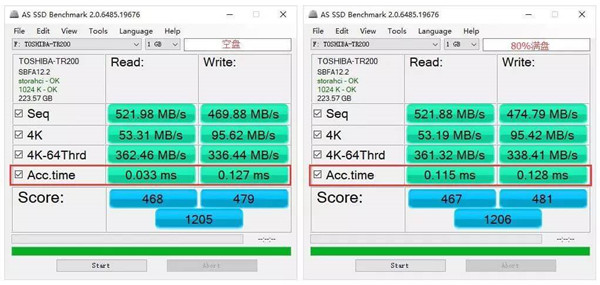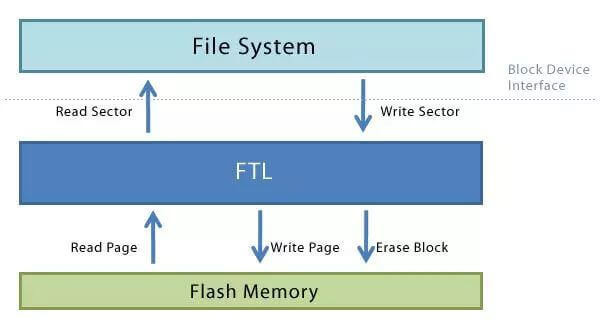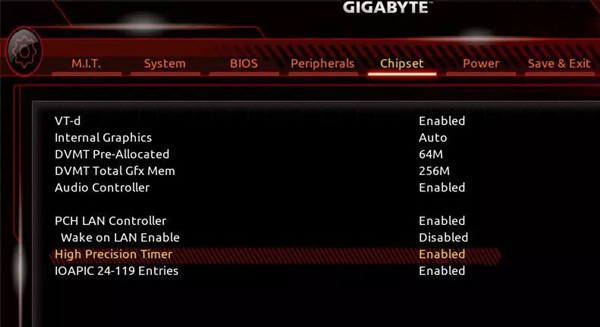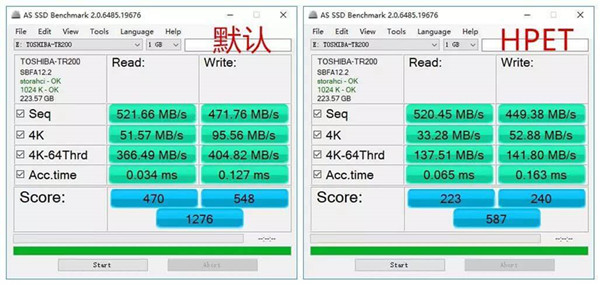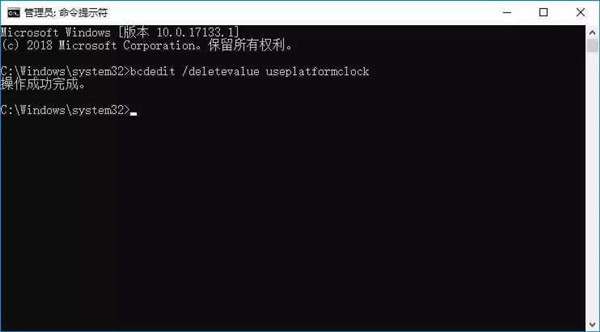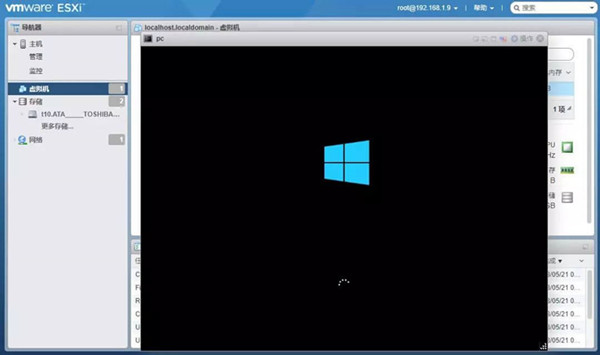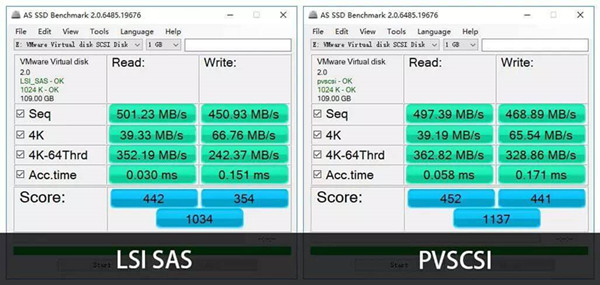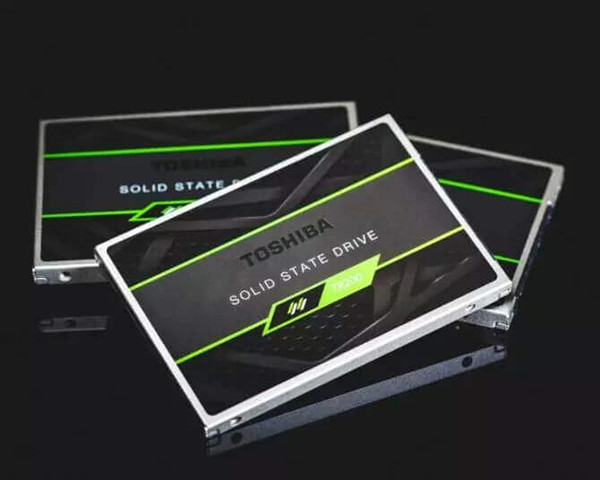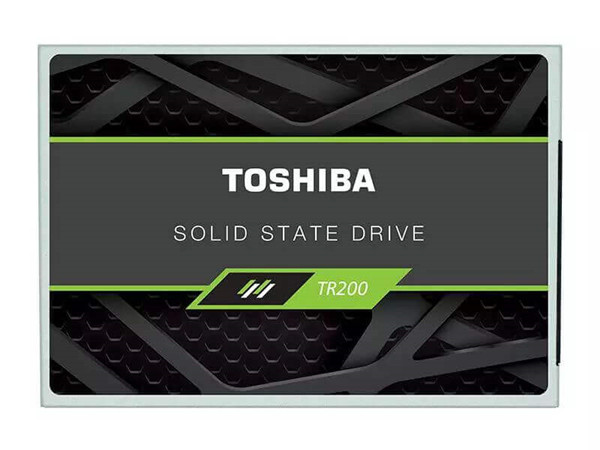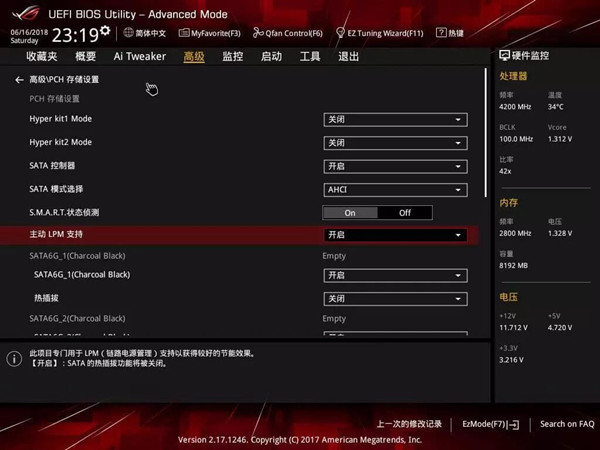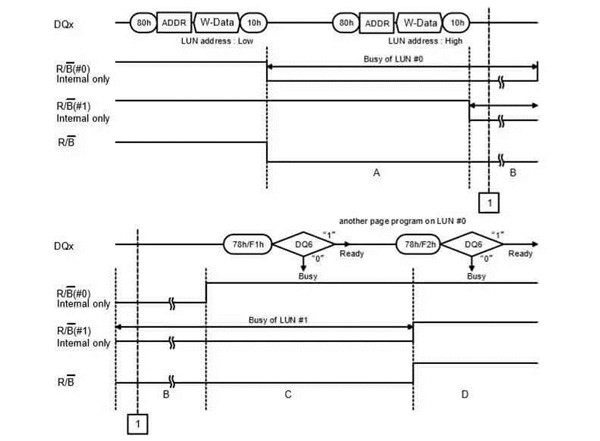For the use of solid state drives, I believe most players do not have an objective understanding of whether their performance is good. Today, I will give you a detailed introduction on how to keep your SSDs in good performance.
See the performance and read latency of SSDs from Toshiba TR200
The performance of SSDs is related to many factors, and space usage can also affect the speed of SSDs. After 80% full disk usage, the access time of the Toshiba TR200 increased from 0.033ms to 0.115ms. The access time is the delay in reading and writing data in the smallest access unit, and is tested in 512 bytes in the AS SSD Benchmark.
What's the problem? This starts with the communication between the file system and the SSD flash.
Between the file system and the flash memory, the SSD contains a flash translation layer called FTL, which is responsible for interpreting each storage unit of the flash memory as the same sector as the traditional mechanical hard disk, while the file system request execution flash cannot support When the overlay is written, the OP reserved space inside the SSD is used to make a move: write new data - the old data is invalid - the update map points the logical address to the new physical address.
It is because of the existence of FTL that SSDs can know which locations have data storage and which locations are blank. When the content of the logical address requested by the host is blank, the SSD can perform the actual flash read operation and directly return to zero to improve efficiency. This is why the empty disk read latency is only 1/5 of the full disk: it does not contain the actual read of the flash memory.
In fact, all SSDs will appear normal, but in most cases, the average user does not pay attention to the space usage of the SSD when running the performance test. It is recommended that users maintain the space occupied by SSDs and maintain a low occupancy rate to achieve higher performance.
Be wary of the decline in SSD performance caused by HPET settings
Searching for HPET, many of the results obtained are related to performance optimization and performance improvement. However, in the past two years, there have been articles pointing out that HPET will affect the performance of platforms such as processors, and the direct victims also include SSDs!
HPET, also known as high-precision event timer, is a feature that is currently enabled by default on computer motherboards.
The higher the timer frequency, the more accurate the timing is, but it also means that more cpu interrupts are generated. As a result, the performance of the computer is degraded, especially the performance of the solid state hard disk is significantly adversely affected. Because this kind of failure is very unpopular, it is often difficult for ordinary users to find the cause, and it is more likely that the solid state hard disk has a problem.
The increase in latency means that the data processing speed is slowing down, and the external performance is performance degradation. At this point, the speed of the SSD itself has not changed, but the ability of the computer to use SSD has been weakened.
In fact, the current version of the Windows 10 system does not use the HPET timer by default. Most of the HPET problems are caused by the wrong "optimization". If Wintimmer is displayed as 24Mhz (INTEL Core) or 14Mhz (amd), you can type bcdedit /deletevalue useplatformclock at the command prompt (administrator) and restart the computer after you press to fix the problem.
Toshiba TR200 achieves ultimate hard drive performance in virtual machines
With the increasing emphasis on personal data security, more and more players choose to purchase NAS network storage servers. In the virtual machine, the application of FreeNAS, media server, ROS soft routing, etc. can not only realize the multi-functional home server application, but also improve the hardware performance utilization.
Next, take the Toshiba TR200 SSD and VMware ESXi as examples to demonstrate how to achieve extreme hard drive performance in a virtual machine.
In VMWare ESXi, SCSI controllers have three modes of operation: LSI Logic SAS, LSI Logic Parallel, and VMWare Parevirtual (also known as PVSCSI), the most advanced of which is PVSCSI, or paravirtualized SCSI.
The Toshiba TR200 SSD has data compression capabilities and uses the CrystalDiskMark 0-Fill mode to verify the theoretical maximum performance of the PVSCSI mode.
By comparison, it is not difficult to see that the biggest advantage of PVSCSI mode is that single-threaded QD32 random read/write can exceed 100,000 IOPS, while 8-thread*QD8 has little difference in performance from traditional LSI Logic SAS, and can reach 100,000 IOPS.
Although the Toshiba TR200 is positioned as an entry-level solid-state drive product, its excellent compatibility and stability are still the best choice for home PC upgrades. The 64-layer BiCS3 flash memory gives the TR200 an excellent write endurance level. Depending on the model, a daily recommended write of up to 219GB is possible, making it possible for many forms of complex applications.
SSD energy saving state setting and optimization
The advent of SSDs has brought more storage performance to computers, but for the purpose of energy saving, environmental protection and reasonable cooling, almost all SSDs support different types of energy saving features. Here we will introduce the detection and optimization methods for energy saving settings of Toshiba SSDs.
SATA interface solid state drive: Toshiba TR200
The SSD of the SATA interface supports the energy-saving features of the LPM link. It is divided into HIPM and dipM. The former is initiated by the host and the latter is initiated by the SSD. SATA LPM energy saving is divided into two levels: Paritial and Slumber. The former is shallow sleep, and the speed of recovery to full speed is faster. The latter is deep sleep, which has better energy saving effect but slower recovery.
To enable the SATALPM power-saving feature, in addition to turning on active LPM support in the motherboard BiOs, you need to install the Intel Rapid Storage Technology driver. The storahci driver that comes with the Microsoft Windows 10 system supports DIPM by default only in the power-saving mode.
M.2 interface NVMe SSD: Toshiba RC100
The NVMe SSD with PCIE channel also supports the perfect link energy saving feature, which reduces the link speed when the hard disk is idle to achieve the dual functions of energy saving and cooling.
Toshiba RC100 supports the L1 level ASPM active power management function. It takes only 1-2 microseconds to exit the L0s energy-saving state, and the 16-32 microsecond delay is required to exit the L1 energy-saving state. At 30 degrees room temperature, the Toshiba RC100 temperature after entering the L1 state is only 36 degrees.
To fully enable the RC100's ASPM idle state power saving feature in the desktop, simply modify the PCI Express link state power management in the Windows Power Options to "Maximum Power Savings", which is to attempt to use the L1 state when the link is idle.
If you are using the desktop or have enhanced cooling measures, you want to maximize the transmission performance of the hard disk, or if there is an incompatibility after the power-saving feature is turned on, simply change the link state power management setting to "Off".
The following knowledge can give you a deeper understanding of SSDs. Only by understanding the motion mechanism of SSDs can you adapt to the local conditions and configure a more reasonable and superior computer environment.
Why is the SSD fast? Just because flash is a natural parallel processing expert
Why can a solid state drive become a computer speed artifact? There are many answers to this question, but multitasking concurrent processing is one of the keys.
Currently, SSDs generally use multi-channel and CE interleaving technology to improve read and write performance by working together with multiple flash dies. Take the Toshiba TR200 as an example. It uses the Toshiba TC58NC1010GSB master with the latest generation 64-layer stacked BiCS flash.
The 240GB Toshiba TR200 uses 256GB of BiCS3 flash memory in eight single-digest packages, and each Toshiba original TC58TFG8T23TA0D flash granule is packaged with a 3D flash die.
Structurally, each of its flash granules contains two LUNs (Logical Unit Numbers), one for each flash tier.
Although theoretically, only one operation can be performed at the same time under the same CE signal, through multi-LUN interleaving, two flash dies can be interleaved, read, and erased in a time-sharing manner. Multiply.
The following figure is a schematic diagram of interleaved write: A-stage LUN0 is performing page programming write, and LUN1 is in Ready idle ready state. Before LUN0 write is not completed, the master can issue other write instructions to LUN1. Both phase LUN0 and LUN1 are performing write operations. The write command for the LUN0 in phase C has been executed, and the idle ready state is restored, and LUN1 is still executing the write command. Both phase LUN0 and LUN1 have completed the write command, and all of them enter Ready idle ready.
In addition to the staggering of write operations, Page Read, Block Erase, Copy-Back, etc. can also perform interleaving, from simple multi-channel concurrency to higher levels, driving SSD performance to a new level. .
Why is the computer hard drive data lost after a sudden power outage?
After an unexpected power outage or a blue screen forced restart, the computer may have lost data on the hard disk. This is mainly because the hard disk does not have the opportunity to complete the cache write as normal shutdown.
The SSD has the same write cache as the mechanical hard disk, and the write cache uses the ram memory for storage. The data cannot be saved after the power is turned off.
However, unlike the mechanical hard disk, the SSD cache stores not only user data waiting to be written, but also metadata such as flash maps and flash block management. So a power outage will bring more risks to the SSD.
Because the FTL mapping table manages the correspondence between the physical address of the SSD flash memory and the external logical address, its loss will cause the entire hard disk data to be unreadable.
User data loss that is not available in the cache is more common than FTL mapping table corruption. The write cache uses DRam storage, and unexpected power loss can result in the loss of content.
Windows maintains the timer buffer refresh setting. Every few seconds, the operating system issues a flush command asking the hard disk to actually write the data in the cache to the disk (mechanical hard disk) or flash memory (solid state disk). The Flush command is issued periodically by the system. Of course, the write buffer can be manually cleared by the sync tool provided by Microsoft to ensure that the data has been safely written.
For some important and critical data, the application software can request Non-cached writes through the API. These writes will go directly to the flash memory of the SSD without being written to the cache. When the write command returns, the data is actually stored in the flash memory, and no data loss occurs when the power is turned off.
Although there are many preventive measures, it is necessary to fundamentally reduce the risk of abnormal power outages, and still start from the cache itself. The Toshiba TR200 uses a built-in built-in cache design to integrate high-speed, small-capacity SRAM cache into the main control, enhancing protection management for abnormal power outages.
On the PCB of Toshiba TR200, there are only two main components (mainly built-in SRAM buffer) and flash memory. The layout is simple and reliable, which reduces the risk of data loss caused by unexpected power failure.
The solid state hard disk interface has evolved over the past decade, and M.2 NVMe has opened a new era.
From 2008 to 2018, the SSD interface experienced several innovations in SATA, mSATA, SATA Express, M.2 and U.2 in 10 years. Who is the real future interface?
SATA: the start of home SSD
The earliest home solid state drives used the SATA interface. The development of SATA has basically reached the bandwidth limit: 600MBps. It has not been able to meet the current development of flash memory speed, but its wide applicability and good compatibility make it one of the most active SSD interfaces available today.
mSATA: First miniaturization attempt
mSATA is a mini version of the SATA interface, mainly used in notebook computers, but also on the high-end desktop computer motherboard. The speed is exactly the same as the SATA interface, which has been eliminated by the mainstream market, but there are still a small number of vendors shipping to maintain the replacement of old equipment.
M.2: Interface unification
The emergence of the M.2 interface has led to a resurgence of SSDs after SATA. M.2 has 2230, 2242, 2260, 2280, 22110 variable physical specifications, desktop and notebook common, is currently the most popular interface in addition to SATA.
As an interface that combines multiple protocols, M.2 is compatible with the AHCI protocol and the NVMe protocol, which is a new protocol for flash memory with lower read and write latency and faster speed. The transmission protocol is related to the transport layer wiring. In theory, an M.2 slot can use either the M.2 SATA protocol solid state hard disk or the PCIE transmission or NVMe protocol solid state hard disk, but the actual support situation varies according to the device. And there are differences. M.2 SATA is more compatible, while M.2 NVMe performs better.
Toshiba recently released the RC100 SSD, which not only has the low latency and high bandwidth advantages of the NVMe protocol, but also takes the lead in applying the HostMemoryBuffer host memory buffer technology, which can cooperate with the Windows 10 operating system to realize the shared host memory acceleration hard disk read and write performance.
The M.2 NVMe SSD, represented by Toshiba RC100, will become a new ideal replacement for SSD interface SSDs with the help of HMB features.
Long-lasting MLC: Re-recognizing Toshiba Q200 Solid State Drive
It is now the era of 64-layer stacked 3DTLC flash memory, and by the end of this year, 96-layer 3D TLC and even 3DQLC flash memory will be available. Why does Toshiba still retain the Toshiba Q200 SSD of flat MLC flash?
On the surface, the 3DTLC SSD as a rising star is already excellent enough, both theoretical performance and durability performance have challenged MLC's strength.
MLC is more expensive, and the running score is not as high as 3DTLC, but this does not mean that MLC has fallen behind. Even the 4K random read and write speed that many people value is not the best measure of the SSD experience. As far as everyday homes are concerned, there are very few opportunities for SSDs to run at full speed. The decision to use the experience is a comprehensive response speed to read and write commands, rather than maximum bandwidth.
For computer users, the larger the SSD bandwidth, the more read and write requests can be completed at the same time, but the home computer is not a server that serves a large number of users at the same time. The delay of the hard disk response to program read and write commands is truly perceptible. speed.
Planar MLC flash memory still has obvious advantages in terms of read and write latency. The PCMark 10 application launch test is used to verify this. The first is the Toshiba TR200240G SSD, and the performance of the 3DTLC flash memory is excellent.
The Q200EX240G SSD with Toshiba MLC flash is faster and faster than the entry-level NVMe SSD.
As an evergreen tree in solid state drives, the Toshiba Q200 has won the trust of millions of users with solid performance. Mature hardware solutions and robust performance make it suitable for home and business computers that are mission-critical.
Of course, 3D TLC flash memory is also evolving, making progress in greater capacity and lower cost. Toshiba plans to mass produce a new generation of BiCS4 flash memory from the end of this year to early next year, pushing the 3D stacking layer to 96 layers, and plans to introduce QLC flash memory.
STC-cable focus on SSD connecotion cable and adapter maunfacturer for 10 years. have high-quality and competitive price. our main products as below.
Send your message to us:
Post time: May-18-2019
